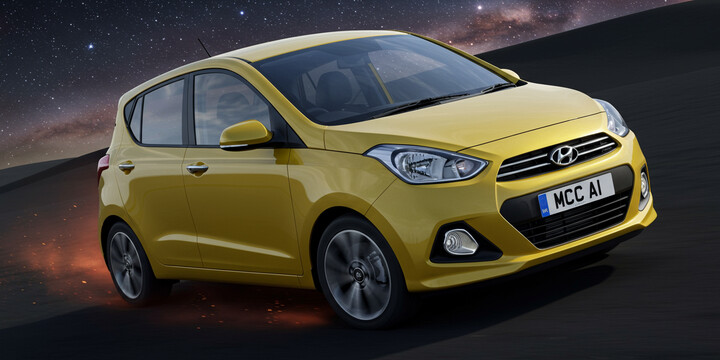
HYUNDAI I10 (2013-18)
The HYUNDAI I10 (2013-18) is a popular and reliable city car that fits perfectly into the UK’s bustling urban and suburban environments. As a compact hatchback, it’s ideal for navigating tight spaces and parking in crowded areas, making it especially appealing to first-time drivers, students, and city dwellers who need an affordable, practical vehicle. With over 14,300 look-ups on MyCarCheck.com and more than 6,400 unique VINs recorded, the HYUNDAI I10 from this era consistently proves itself as a well-loved choice among used car buyers. It’s known for its straightforward driving experience, good fuel economy, and low running costs—factors that make it a sensible option for everyday commuting and errands.
What makes the HYUNDAI I10 (2013-18) stand out in its class is its blend of practicality, reliability, and value. It often features a simple, modern design with efficient space usage, making it a comfortable ride for single drivers or small families. The average mileage of around 42,903 miles suggests that many owners keep their cars well-maintained and in good condition, with most having just under two previous owners. Overall, the HYUNDAI I10 (2013-18) continues to be a standout choice for those seeking an affordable, dependable, and easy-to-drive used car in the UK market.

average use

The data shows that most Hyundai i10 vehicles recorded recently tend to have mileage clustered between 40,000 and 80,000 miles, accounting for a significant portion of the fleet (around 25%). The percentage of vehicles with higher mileages — over 100,000 miles — is relatively low, suggesting that these cars are less commonly found at very high mileages. Notably, only a small fraction of vehicles are recorded with extremely high mileages, such as over 150,000 miles, indicating that high-mileage Hyundai i10s are less prevalent. Conversely, a modest percentage (around 2.2%) are within the very low mileage bracket (0-10,000 miles), which may include newer or less-used vehicles. Overall, the data suggests that typical ownership cycles for this model tend to see vehicles accumulating up to around 80,000 miles before either being resold or retired.

vehicle values

The private sale valuations for Hyundai i10 (2013-18) vehicles indicate that the majority of cars are valued between £3,000 and £5,000, accounting for a combined approximately 78.4% of sales—specifically, 39.5% fall within the £3,000–£4,000 range, and 38.9% within £4,000–£5,000. A smaller proportion, around 12%, are priced between £5,000 and £6,000. Very low valuations between £1,000 and £2,000 are rare, representing only 0.3%, while higher price brackets above £6,000 are also uncommon, with just 2.8% in the £6,000–£7,000 range. These insights suggest that most private sales for this model are concentrated in the lower to mid-price segments, reflecting the vehicle's typical market positioning and value.

production years

The data indicates that the majority of Hyundai i10 vehicles from the 2013-2018 range were manufactured between 2014 and 2016, accounting for approximately 97% of the sample. Notably, 37% were made in 2015, followed by 32.1% in 2014 and 27.8% in 2016. Vehicles from 2017 and 2013 are relatively rare, comprising just 2.8% and 0.3%, respectively. This suggests that most cars in this model range are concentrated around the mid-2010s, with a significant peak in 2015.

colour popularity

The data shows that the most common main paint colours for the Hyundai i10 (2013-2018) are White (31.2%) and Blue (29%), indicating a preference for these lighter and vibrant shades among owners. Black and Grey also feature significantly at 10.2% and 17.9% respectively. Interestingly, Silver is less prevalent at 9%, while brighter colours like Orange (2.5%) and Red (0.3%) are quite rare in this sample. This suggests that more conventional colours dominate this model’s styling preferences, with only a small fraction opting for bold or vivid hues.

ownership cycle

The data on the number of registered keepers for Hyundai I10 models from 2013 to 2018 reveals some notable patterns. The most common number of keepers is 3, accounting for 32.1% of vehicles, indicating a significant portion of the cars change hands relatively once or twice during their lifespan. Following that, vehicles with 2 keepers represent 25%, and those with 4 keepers make up 19.1%. Collectively, these three categories cover around 76% of the vehicles, suggesting that the majority have experienced two to four ownership changes.
Less common are vehicles with 1 keeper (6.5%) or 5 keepers (10.5%), which may represent either newer cars still with their original owner or vehicles that have been traded multiple times. Notably, only a small fraction have more than 8 keepers, with just 0.6% having 8 and 0.3% having 12.
Overall, the data indicates a relatively moderate turnover rate, with most Hyundai I10s changing hands a few times rather than multiple times or remaining with a single owner for very long.

engine choices

The data indicates that Hyundai i10 models from 2013 to 2018 predominantly use petrol as their primary fuel type, accounting for 100% of the sample. Regarding engine capacity, the majority (approximately 55%) are equipped with a 998cc engine, while the remaining 45% have a 1248cc engine. This suggests that within this model range, the smaller 998cc engine is slightly more common, but both engine sizes are fairly evenly represented.












